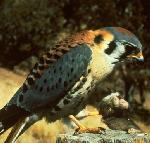It’s hard to quell an urge to run away. Sometimes you just want to get up and go. The trouble is, you can lose your reason for leaving the further away you get. The departure unfocuses and redefines you, a paradox of being human.
 The Green Darner Dragonfly is unencumbered by such metaphysical consideration. He gets up and goes in style! A large, flashy insect with a green back, his blue belly looks purple when the dragonfly is cold. Green Darners are hard to miss, particularly so when they form swarms and head south in early autumn.
The Green Darner Dragonfly is unencumbered by such metaphysical consideration. He gets up and goes in style! A large, flashy insect with a green back, his blue belly looks purple when the dragonfly is cold. Green Darners are hard to miss, particularly so when they form swarms and head south in early autumn.
The Common Green Darner is one of just a few varieties of migratory dragonflies. Insect migration is still largely a biological mystery, and only recently have dragonfly travels been studied. What is known is that dragonflies migrate similarly to birds. Or rather, that birds migrate like dragonflies, since dragonflies predate birds by 140 million years. Like birds, it takes a couple of days of cool weather to inspire the bugs to move, and they do so in groups that sometimes number in the thousands. Sue Sturtevant and Cindy Cormier saw a terrific example of that one day last week as hundreds of green darners zoomed through the kitchen garden while they were having a meeting on the back porch. When I stopped by, the yard was teeming with flashing wings and aerial acrobatics.
 Dragonflies use some of the same guides for navigation as birds, and in 1955 a hawk watcher named Frank Nicoletti observed that American Kestrels (a small and beautiful falcon) often migrate in groups along with the dragonflies. The kestrels use the dragonflies as travel snacks along the way, snatching them out of the sky for a quick meal.
Dragonflies use some of the same guides for navigation as birds, and in 1955 a hawk watcher named Frank Nicoletti observed that American Kestrels (a small and beautiful falcon) often migrate in groups along with the dragonflies. The kestrels use the dragonflies as travel snacks along the way, snatching them out of the sky for a quick meal.
There is still much to learn about the dragonfly odyssey. For example, the darner that flies south this fall will not return here in the spring. Instead, his progeny will make the trip, leaving him to procreate down south for another year. Thereafter, that same darner may come north again, switching places with his offspring. What controls that bi-annual trade-off is unknown. How do they know when to stay and when to go, and how to get there?
We begin to see that humans are not alone in yearning for a place of belonging. Migration is not homesickness, rather it seems to be an inexorable tug towards an indigenous fixed point. A turtle will cross a four-lane highway to return to it’s natal pond to breed. Birds, bats, frogs, turtles, insects all migrate. Monarch Butterfly migration has achieved celebrity status.
 In people, wanderlust is abetted by business concerns, schools, jobs and such that send us off to points distant. Yet somehow, the throng of dragonflies in the kitchen garden the other day had the same feel as an airport or train station on the day before Thanksgiving. Perhaps we are more in visceral sympathy with nature than we realize.
In people, wanderlust is abetted by business concerns, schools, jobs and such that send us off to points distant. Yet somehow, the throng of dragonflies in the kitchen garden the other day had the same feel as an airport or train station on the day before Thanksgiving. Perhaps we are more in visceral sympathy with nature than we realize.
See you on the trails,
Diane Tucker, Estate Naturalist
Tags: insects

September 25, 2009 at 6:14 PM |
The last photo really brings your point home.
Thanks again.
September 25, 2009 at 8:46 PM |
Bridget, Thank you so much for visiting again! Cheers, Diane
January 5, 2010 at 9:27 AM |
red piano…
Megacool Blog indeed!… if anyone else has anything it would be much appreciated. Great website Enjoy!…